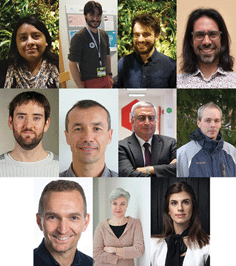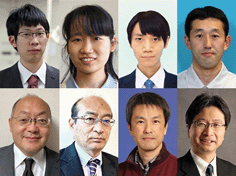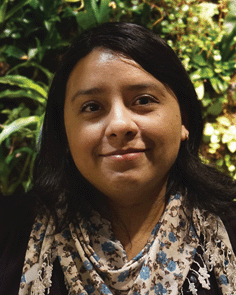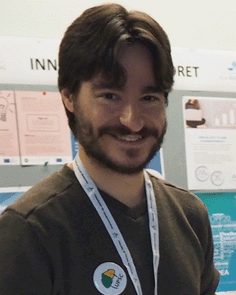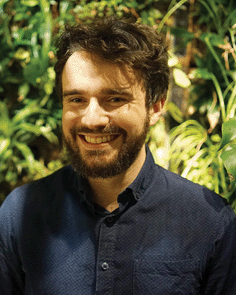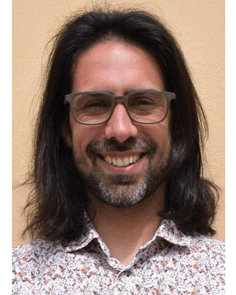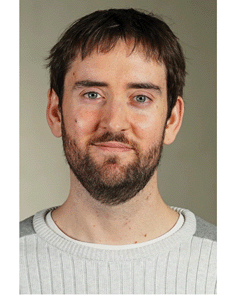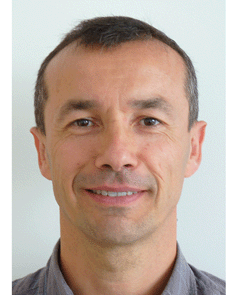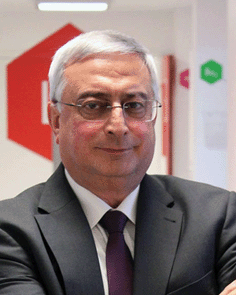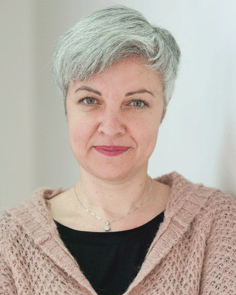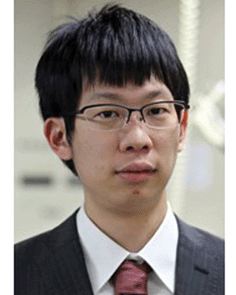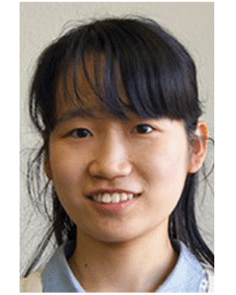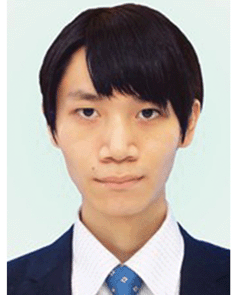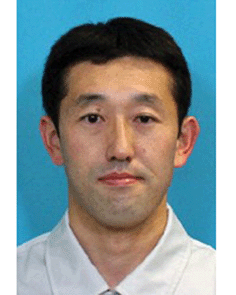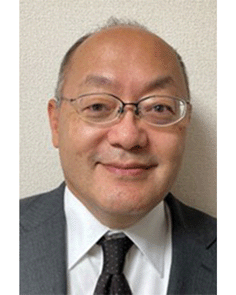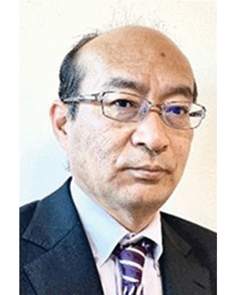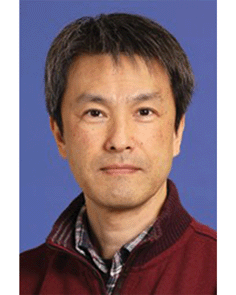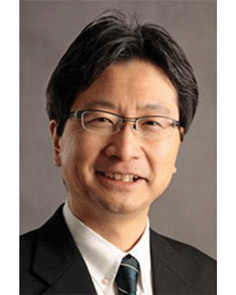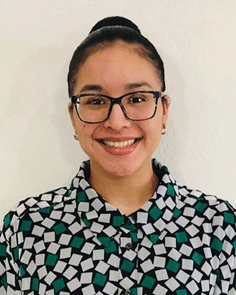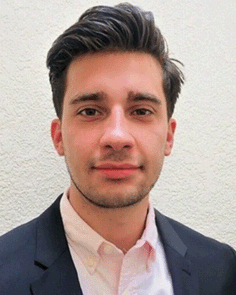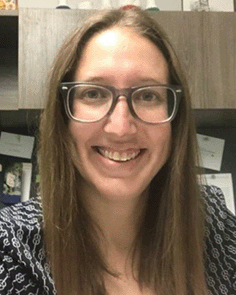Materials Horizons 2021 Outstanding Paper Award
We are delighted to introduce the winners of our 2021 Outstanding Paper Award in this Editorial.Our selection process remains the same as in previous years (see our introductory Editorial from 2019) retaining the focus on the science presented and the potential future impact of the work. The quality of the articles we published throughout 2021 was excellent, and therefore we have chosen to award not only our most Outstanding Paper, but also a runner-up and an Outstanding Review for 2021.
Please join us in congratulating our winners; we hope you enjoy reading their outstanding articles as much as we did.
Materials Horizons Outstanding Article 2021:
Biohybrid plants with electronic roots via in vivo polymerization of conjugated oligomersDaniela Parker, Yohann Daguerre, Gwennaël Dufil, Daniele Mantione, Eduardo Solano, Eric Cloutet, Georges Hadziioannou, Torgny Näsholm, Magnus Berggren, Eleni Pavlopoulou and Eleni Stavrinidou
In this outstanding article (DOI: https://doi.org/10.1039/D1MH01423D), the authors developed biohybrid plants with an electronic root system. They demonstrate that by simply watering plants with a conjugated oligomer solution, the oligomers polymerize on the roots, forming an extended network of easily accessible conductors. The plant's biocatalytic machinery drives the polymerization and templates the polymer along its tissue. The integrated mixed ionic–electronic conductors maintain their functionality over weeks and, as a proof of concept, energy storage was demonstrated. Biohybrid plants with electronic roots pave the way for autonomous systems with potential applications in energy, sensing, and robotics.
The initial experiments of this work were performed back in 2016 when Stavrinidou, still a postdoc in the Berggren group, discovered that conjugated trimers polymerize on roots, forming conducting coatings. However, the project was put on hold and took off when Parker joined Stavrinidou's group in 2018. Parker optimized the electronic functionalization of the roots, characterized their electronic and electrochemical properties, and developed the root supercapacitor. Dufil, also a student in the e-Plants group, elucidated the polymerization mechanism and helped with sample preparation and analysis. In collaboration with plant biologists Daguerre and Näsholm, the e-Plants team studied the effect of functionalization on root integrity and development. Trimers were synthesized by Mantione in the group of Cloutet and Hadziioannou, while the organization of the polymer on the roots was resolved with X-ray scattering by Pavlopoulou and Solano. The work presented in this article was only possible via an interdisciplinary collaboration.
Materials Horizons Outstanding Article runner-up 2021:
van der Waals solid solution crystals for highly efficient in-air photon upconversion under subsolar irradianceRiku Enomoto, Megumi Hoshi, Hironaga Oyama, Hideki Agata, Shinichi Kurokawa, Hitoshi Kuma, Hidehiro Uekusa and Yoichi Murakami
In this outstanding article (DOI: https://doi.org/10.1039/D1MH01542G), an organic system that upconverts lower energy photons into those with higher energy (i.e., shorter wavelength) efficiently and stably in air was developed and the mechanism was elucidated. The authors’ new concept lies in the explicit use of bi-component solid–solution crystals formed by van der Waals dispersion forces, which have versatility for a broad range of organic systems. They created the first thermodynamically-stable photon upconverting solids with a long triplet-exciton diffusion length (over 1 micrometer) and unprecedentedly low excitation threshold (below terrestrial sunlight intensity), opening up a new material realm that significantly widens the possibility of future photon-related technologies.
This project, which we carefully chose RSC's Materials Horizons as the best venue to convey it, was made possible by our R&D team, constituted by an excellent fusion of academia (Tokyo Institute of Technology), a worldwide automobile company (Nissan Motor Co., Ltd), and a global energy company that is also one of the pioneers of commercial OLED materials (Idemitsu Kosan Co., Ltd). All co-authors of this paper are highly talented, diligent, and enthusiastic about innovating the materials landscape for triplet-sensitized photon upconversion, which is one of the hottest recent research topics in the scientific community owing to the significantly broad and impactful potential applications.
Materials Horizons Outstanding Review 2021:
Catalytic methods for chemical recycling or upcycling of commercial polymersSophia C. Kosloski-Oh, Zachary A. Wood, Yvonne Manjarrez, Juan Pablo de los Rios and Megan E. Fieser
In this outstanding review (https://doi.org/10.1039/D0MH01286F), the authors describe the various catalytic methods studied to either reprocess common commercial polymers into their original monomers (recycling) or into value-added small molecules and fuels (upcycling). As polymer pollution is reaching a global environmental crisis, the development of improved recycling/upcycling methods for these accumulating materials is an emerging field for future generations of scientists. The use of a catalyst can often lead to more efficient reactions with strong polymer backbones and higher product selectivity. The methods covered include the heavily studied fields of pyrolysis, solvolysis, and hydrogenolysis, as well as other developing topics.
While this article started as a short focus article, the COVID-19 pandemic motivated this group of authors to convert it into a comprehensive review of the field. Since they wanted to use their time in lockdown to explore polymer recycling and upcycling literature, it was exciting to share these findings with the rest of the community. Research for this article has helped inspire new research projects in the Fieser group in developing new catalytic methods for the processing of commercial polymers. The authors are thrilled if the information encourages new ideas for other students and research groups.
Dr Michaela Muehlberg, Executive Editor
Professor Martina Stenzel, Editorial Board Chair
Author Biographies
Materials Horizons Outstanding Article 2021:Biohybrid plants with electronic roots via in vivo polymerization of conjugated oligomers
Daniela A. Parker Yañez is a doctoral candidate in Applied Physics at the Electronic Plants group, Laboratory of Organic Electronics, Linköping University. Her research on interfacing conjugated polymers and plant roots started while doing an ERASMUS internship with Dr Eleni Stravinidou in the group of Electronic Plants in 2018. She reported the conductive nature of biohybrid roots in her Master’s thesis performed in the same group with Dr Eleni Stravinidou as her main supervisor and Dr Stefan Mannsfeld as co-supervisor. After finishing her Master’s studies in Materials Science at the Technical University of Dresden in 2020, she joined the Electronic Plants group for a PhD. Her PhD research focuses on the development of biohybrid devices based on plants via functionalization with bioelectronic materials. The main aim is to develop biohybrid devices that can store energy or serve as transducers for sensing. Daniela has also an interest in understanding the complexity of the interactions that take place in the rhizosphere and harnessing some of these interactions for technological purposes. Beyond this, Daniela is also interested in exploring the possibility of designing transient devices that are safer to dispose and recycle to align with the circular economy.
Yohann Daguerre is a plant biologist with a MSc in Microbiology, Plant Biology and Biotechnology (Aix-Marseille University, France) and a PhD in Plant Biology and Forestry (National Research Institute for Agriculture, Food and Environment / Lorraine University, France). He joined Dr Judith Lundberg-Felten's group as a Kempe Fellow before integrating into Prof. Torgny Näsholm and Dr Totte Niittylä's groups as a researcher (Umeå Plant science Centre/Swedish University of Agricultural Sciences, Sweden). Taking part in national and European initiatives, such as Bio4Energy and HyPhOE (Hybrid Electronics Based on Photosynthetic Organisms), his research focuses on ectomycorrhizal symbiosis, plant nitrogen nutrition and wood development.
Gwennaël Dufil graduated from the University of Health, Science, and Technology of Nantes in France with a focus on the synthesis and characterization of light-interactive materials for optoelectronic technologies and applications. During his Master’s program, he did an internship at the Laboratory of Organic Electronics in Norrköping, Sweden, where he worked on the development of a glucose biosensor for the dynamic measurement of glucose export from extracted plant chloroplasts. The next year, he did his MSc thesis at the KAUST Solar Center in Thuwal, Saudi Arabia, where he worked on the development of lead perovskite solar cells with a metal oxide layer for improving their stability. He then returned to Norrköping as a PhD candidate under the supervision of Eleni Stavrinidou at the Electronic Plants group at Linköping University. His work focuses on the enzymatic polymerization of conjugated polymers, in vitro and in vivo, using plants’ enzymatic activity, and the development of integrated devices for plant bioelectronics and energy harvesting. He has also worked on applying this technology to an animal model, Hydra vulgaris, for the seamless integration of bioelectronic interfaces.
Daniele Mantione graduated from the University of Pavia (Italy) in 2013 and obtained his PhD degree in 2017 from the University of the Basque Country (Spain), working in POLYMAT in the innovative polymer group of Prof. David Mecerreyes and Dr Haritz Sardon. In 2017, he joined the group of Prof. James Hedrick in IBM Almaden, California (USA) with the Basque fellowship Global Training. In 2018, he moved to France for a 3 year post-doc at LCPO, a polymers institute in Bordeaux, working in the team of Prof. Georges Hadziioannou with a Marie Curie fellowship. During his post-doctoral work, Daniele participated in the development of new conductive polymeric materials, principally based on polythiophenes. After his post-doctoral stay, he returned to Spain to join a new-born start-up, POLYKEY, as senior researcher. In 2021, he received the award of Young Postdoc Researchers by the Real Sociedad Española de Química (RSEQ). His interests and passions include the synthesis and characterization of functional polymers: conducting polymers, PEDOTs and redox polymers for energy and bioelectronics.
Dr Eduardo Solano is scientist at the NCD-SWEET beamline, the hard X-ray scattering beamline at the ALBA synchrotron (Spain). He received a BS in Chemistry in 2009 and a PhD in Chemistry in 2013 (Autonomous University of Barcelona, Spain). He spent 3 years as a post-doctoral researcher at Ghent University (Belgium) in the group of Prof. Christophe Detavernier. In 2017, he returned to Spain as post-doctoral researcher at the ALBA synchrotron, where he became a beamline scientist in 2020. As an expert on surface scattering techniques, his research is focused on the use of synchrotron radiation for the characterization of materials and systems for energy, catalysis, and biomedical applications.
After receiving a PhD in Polymer Chemistry at the University of Bordeaux (in 1996) on star-shaped polymers via core-first cationic polymerization and completing a post-doctoral fellowship at the University of Akron (OH, USA) developing star-shaped polymers via arm-first anionic polymerization, Eric Cloutet became a CNRS researcher in 1997. He was recruited to the University of Paris 13 in the laboratory of research on macromolecules to design original carbazole-based electro-luminescent polymer materials (1997–2000). In 2001, he moved to the LCPO at the University of Bordeaux in order to start working on a new topic on bio-sourced polymers and green chemistry methodologies. He became a CNRS Senior Researcher in 2012. He is currently working in and leading a new team created early in the 2010s on the design and formulation of advanced functional polymers for applications in energy, optoelectronics, batteries, photovoltaics, (flexible) displays, etc. His research interests include the development of various (co)polymers based on a π-conjugated sequences, as well as original (co)polymers via various polymerization routes both in homogeneous and heterogeneous media (e.g. aqueous PEDOT dispersions), integrating bio-based monomers and more sustainable pathways.
Since 2009 Georges Hadziioannou has been a Chemistry Professor at the University of Bordeaux. He is holder of the Industrial Chair ANR/Arkema/ISORG/VALEO/Surys: SMILE “Smart Polymer Ferrotronic Materials for Environmental Monitoring and Energy Conversion”. He is Coordinator of the EquipEx ELORPrintTec and Scientific Director of the LabEx AMADEus. An emeritus senior member of the Institute Universitaire France, he received his Doctorate in Physical Sciences from the Louis Pasteur University of Strasbourg in 1980. Between 1980 and 1982, he was an associate researcher at the Polymer Science and Engineering Department of the University of Massachusetts. In 1982, he became a research staff member at IBM Almaden Research Laboratory, where he directed the group “Surface and Interface Dynamics” from 1986 to 1989. Between 1985 and 1989, he was simultaneously an Industrial Research Fellow of the National Institute for Science and Technology (NIST) and consulting Professor at the Department of Chemical Engineering at Stanford University. In 1989, he became Professor at the University of Groningen (Netherlands), where he directed the Materials Science Center (today named the Zernike Institute for Advanced Materials) from 1997 to 2000. In 2001, he moved to the Louis-Pasteur University in Strasbourg, where he took charge of the direction of the ECPM between 2004 and 2009. These achievements were recognized by his election in 2016 as an international member at the National Academy of Engineering of the US with the quotation “For foundational discoveries and insights enabling the development of polymers with advanced functionality and performance”.
For more info: https://www.lcpo.fr/people/faculties/georges-hadziioannou.
Torgny Näsholm is a Professor in plant physiology and holds the chair in tree ecophysiology at the Faculty of Forest Sciences, Swedish University of Agricultural Sciences. His research is focused on plant mineral nutrition, in particular the role of organic nitrogen for plant nitrogen nutrition. Within this field of basic science, groundbreaking discoveries have been made, some of which have resulted in new fertilizers which are now commercially available. For this, Torgny Näsholm was awarded the highest honor in forestry, The Marcus Wallenberg Prize, in 2018.
Magnus Berggren received his MSc in Physics and PhD in Applied Physics in 1991 and 1996, respectively, from Linköping University in Sweden. After that, he joined Bell Laboratories, USA, for postdoctoral studies, focusing on the development of organic lasers. In 1997, he co-founded Thin Film Electronics AB and for one and a half years he served the company as its managing director with the prime mission of developing printed electronic memories. Then, he returned to Linköping University and also joined Acreo (today RISE) to initiate their research in printed and paper electronics, in part supported by the paper and packaging industries. Since 2002, he has been a professor and director of the Laboratory of Organic Electronics, Linköping University, which today includes about 140 people organized in 12 different research groups. Magnus Berggren is one of the pioneers behind paper electronics, organic bioelectronics and electronic plants and in 2012 and 2018, he became an elected member of the Royal Swedish Academy of Sciences and the Royal Swedish Academy of Engineering Sciences (IVA), respectively. In 2014, he received the Marcus Wallenberg Price and in 2017, he received the IVA gold medal. Recently, Magnus Berggren was appointed as the director of the Wallenberg Initiative Material Science for Sustainability (WISE), a 260 million Euro research program including six member universities, operating from 2022 through 2033.
Dr Eleni Pavlopoulou studied Physics at the Aristotle University of Thessaloniki, Greece, and received a MSc in Materials Physics from the same University in 2004. In 2009, she obtained a PhD in Polymer Physics from the University of Crete, Greece, and then moved to Princeton University, USA, and the group of Prof. Y.-L. (Lynn) Loo, where she was introduced to organic electronics. In 2011, she returned to Europe to join the Laboratoire de Chimie des Polymères Organiques (LCPO) and the group of Prof. Hadziioannou in Bordeaux, France, holding a Marie Curie Individual Fellowship. Between September 2013 and August 2020, she was an Assistant Professor at the École Nationale Supérieure de Chimie, de Biologie et de Physique (ENSCBP) of the Institut Polytechnique de Bordeaux (Bordeaux INP), carrying out her research in LCPO. Since September 2020, she has been a Researcher in the Institute of Electronic Structure and Laser (IESL) of the Foundation for Research and Technology – Hellas (FORTH). Eleni's research focuses on the development of functional electrically active polymers and their integration in energy harvesting and bioelectronic devices. She has long-standing experience in conducting, semi-conducting, and ferroelectric/piezoelectric polymers, implemented, among others, in photovoltaic, thermoelectric, and sensing applications. Her expertise integrates materials design, processing, physical characterizations, device fabrication and performance characterizations.
Eleni Stavrinidou is an Associate Professor and leader of the Electronic Plants group at Linköping University. She has received a PhD in Microelectronics from EMSE (France) in 2014. She then did her postdoctoral training at Linköping University (Sweden), during which she was awarded a Marie Curie fellowship. In 2017, Eleni Stavrinidou became an Assistant Professor in Organic Electronics at Linköping University and established the Electronic Plants group. She received several grants, including a Swedish Research Council Starting Grant and a FET-OPEN grant, which she was the coordinator of. In 2019, she received the L’ORÉAL-UNESCO For Women in Science prize in Sweden. In 2020, she became an Associate Professor and Docent in Applied Physics. The same year, she was awarded the Future Research Leaders grant of the Swedish Foundation for Strategic Research. In 2021, she was awarded an ERC-Starting Grant. Her research interests focus on plant bioelectronics for the real time monitoring and dynamic control of plant physiology and plant-based biohybrid systems for energy and sensing applications.
Materials Horizons Outstanding Article runner-up 2021:
van der Waals solid solution crystals for highly efficient in-air photon upconversion under subsolar irradiance
Riku Enomoto is currently a PhD candidate in the School of Engineering at the Tokyo Institute of Technology under the guidance of Professor Yoichi Murakami. He received his BS and MS degrees in mechanical engineering from the Tokyo Institute of Technology. His research focused on photon upconversion based on triplet–triplet annihilation (TTA–UC), especially that achieved using solid-state materials. He uses both experimental and quantum chemical computational approaches in his research. He was the recipient of the HAKUSEIKAI Mechano-Aerospace Best Student Award (spring and fall semesters in 2015 and spring semester in 2016) and a Student Award of the Japan Society for Aeronautical and Space Sciences in 2016.
Megumi Hoshi received her BS and MS degrees in engineering from the Tokyo Institute of Technology in 2018 and 2021, respectively. Her research focused on photophysics in organic solid materials and chemical thermodynamics. She was the recipient of a Tobitate (Leap for Tomorrow) Young Ambassador Program Fellowship in 2018 for research activity on organic functional materials at École Polytechnique Fédérale de Lausanne (EPFL). She currently works for NTT Network Innovation Laboratories, where she works on fiber optics and high-capacity optical transmission systems.
Hironaga Oyama received a BS degree in 2020 and an MS degree in 2022, both from the Tokyo Institute of Technology. His research focused on the mechanism of solid-state phase transformations, such as the dehydration of pharmaceutical hydrates using X-ray crystallography, and he has published academic papers on this topic. In 2022, he joined Oji Pharma Co., Ltd as a research division member.
After receiving his Master's degree from the Tokyo University of Science, Hideki Agata has been working in the Material Engineering Department at Nissan Motor Co., Ltd. He has been in charge of the development of advanced functional polymer materials for the interior and exterior parts of automobiles.
Shinichi Kurokawa joined Idemitsu Kosan Co., Ltd in 1991 after graduating from Osaka University with a Master’s degree in Physical Chemistry. He has been engaged in the research and development of polymer properties, floor heating systems and lithium electrolyte materials for 22 years. Since 2013, he has been in charge of the sales of OLED materials and oxide semiconductor materials in the Electronic Materials Department of Idemitsu Kosan.
Hitoshi Kuma joined Idemitsu Kosan Co., Ltd in 1990 after graduating from Kyoto University with a Master’s degree in Physical Engineering. After researching laser photo-chemistry and the development of liquid crystal devices using ferroelectric liquid crystal polymer materials for ten years, he has been engaged in the development of organic light-emitting diode (OLEDs) materials since 2000. His major interests are the optical and electronic properties of organic materials and the physical analysis of electro-optical devices. He is currently in charge of building medium- to long-term technology strategies in the OLED materials business as a principal associate of the Electronic Materials Department of Idemitsu Kosan.
Hidehiro Uekusa is an Associate Professor in the Department of Chemistry at the Tokyo Institute of Technology. He leads a chemical crystallography research group. He received a Doctor of Science degree from Keio University in 1992, then joined the Department of Materials Science at the Tokyo Institute of Technology as a Research Associate. His current interests are in the structural science of molecular crystals, including the structure–property relationships of pharmaceutical crystals, crystalline-state structural changes by dehydration/hydration, and the mechanistic elucidation of various color-changing processes in crystals, such as photo-, thermo-, and vapo-chromism. He has been awarded the Challenging Research award of the Tokyo Institute of Technology (2003) and the Japan Crystallographic Society Award (2012).
Yoichi Murakami is a Professor at the Laboratory for Zero-Carbon Energy at the Tokyo Institute of Technology. He received his BS and MS degrees from the Tokyo Institute of Technology in 1998 and 2001, respectively. From 1999 to 2000, sponsored and dispatched by the Government of Japan, he constructed theories of the optimization of forced convection cooling at the Massachusetts Institute of Technology under the guidance of Professor Borivoje (Bora) Mikic. After working as a mechanical and cooling-design engineer for the VAIO Laptop PC Division of the Sony Corporation from 2001 to 2002, he earned his PhD in 2005 at the Department of Mechanical Engineering in the University of Tokyo under the guidance of Professor Shigeo Maruyama. Subsequently, he carried out postdoctoral research at Rice University in Professor Junichiro Kono's group and then at the University of Tokyo in Professor Tatsuya Okubo's group. In 2009, he became an Assistant Professor at the Tokyo Institute of Technology, from which he obtained his tenure in 2014. He was then an Associate Professor at the Department of Mechanical Engineering in the same university before his present position. His research interests encompass a broad range of energy and materials related subjects for the realization of a carbon-neutral world and the sustainable development of humankind.
Materials Horizons Outstanding Review 2021:
Catalytic methods for chemical recycling or upcycling of commercial polymers
Sophia Kosloski-Oh is a chemistry doctoral student under the direction of Professor Megan Fieser at the University of Southern California. She received her BS and MS in Chemistry from the University of Utah, where she conducted research in the lab of Professor Caroline Saouma. Her research focuses on designing rare earth metal catalysts that will polymerize sustainable thermoplastic elastomers and depolymerize petroleum-based polymers.
Zachary Wood is a PhD student under the supervision of Professor Megan Fieser at the University of Southern California (USC). His research focuses on developing homogeneous metal catalysts for the synthesis of environmentally friendly polymers and the recycling of current non-degradable polymers. Prior to joining the PhD program at USC, Zachary received a BS in Chemistry (Honors) from the University of Kansas, where he performed research under the mentorship of Professor Mikhail Barybin.
Yvonne Manjarrez is a PhD student under the supervision of Professor Megan Fieser at the University of Southern California. Her research focuses on the synthesis of rare earth metal catalysts for the copolymerization of cyclic anhydrides and epoxides, along with the synthesis of alkaline earth metal catalysts for the depolymerization of petroleum-based plastics. Prior to starting her PhD, Yvonne received her BS in Chemistry from Arizona State University.
JP de los Rios received his BS in Chemistry with certifications in Forensic Science, Pre-Health Professions, and Business Foundations in 2018 from the University of Texas at Austin, funded by the Gates Millennium Scholars Program and the GE-Ronald Reagan Foundation Scholarship. He is currently a 4th year graduate student working under the supervision of Prof. G. K. Surya Prakash in the Loker Hydrocarbon Research Institute at USC. His research interests are focused on the transformation of small molecules into electrochemical energy through heterogeneous catalysts. This includes CO2 capture and conversion, alkaline fuel cells, and electrochemical sensors.
Professor Fieser is a Gabilan Assistant Professor of Chemistry at the University of Southern California (USC). She received her PhD in Chemistry from the University of California, Irvine, under the supervision of William J. Evans. She then conducted postdoctoral studies in the lab of William B. Tolman at the University of Minnesota, as part of the NSF Center for Sustainable Polymers. At USC, Professor Fieser's research group is interested in synthesizing molecular inorganic catalysts that can either be used to synthesize degradable polymers or recycle/upcycle commercial polymers.
| This journal is © The Royal Society of Chemistry 2022 |

